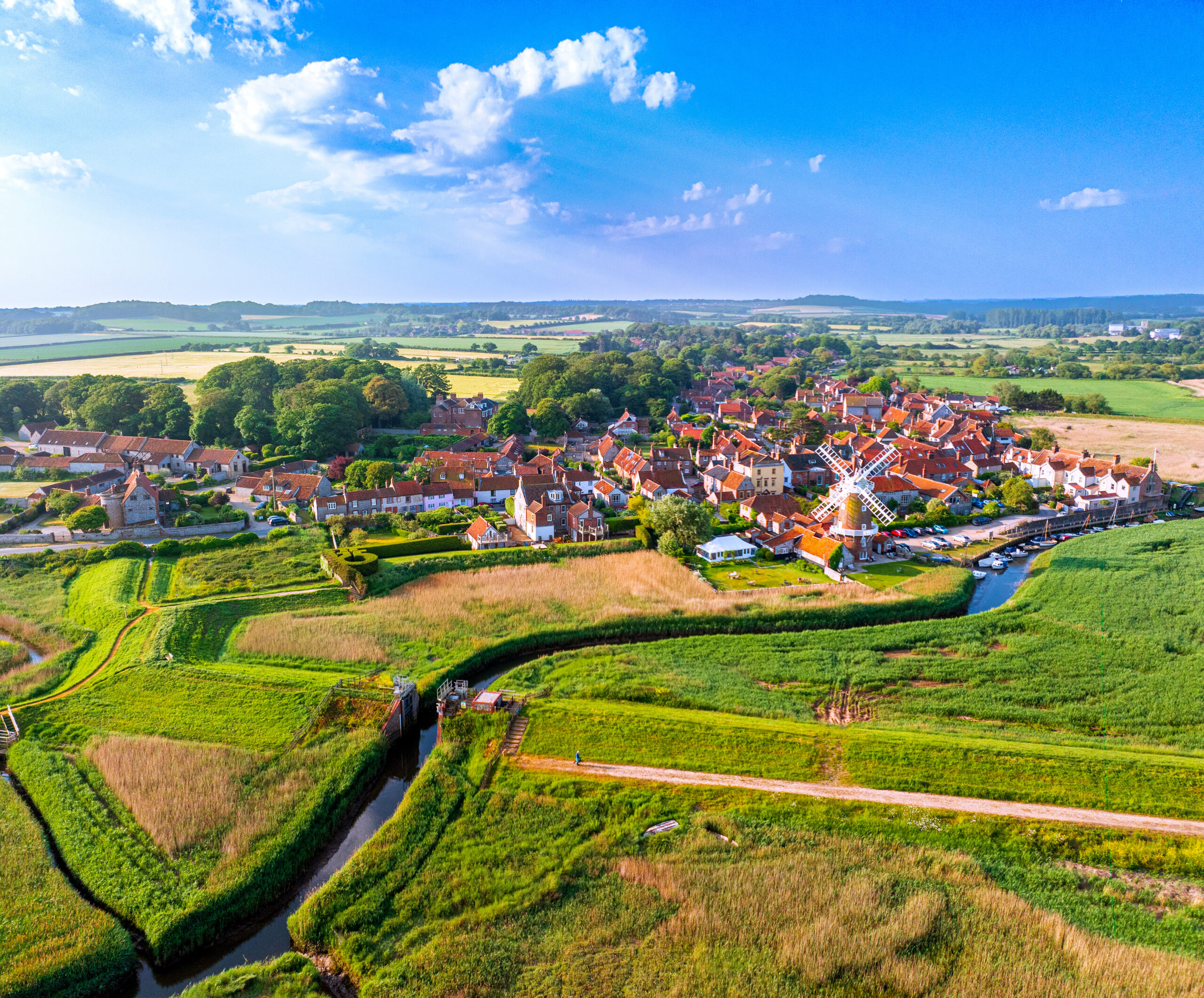England offers vacationers beautiful landscapes and a lot of interesting history. This also applies to the county of Norfolk on the east coast.
The county lies directly on the coast of the North Sea, which borders the country to the east and north and borders Suffolk and Cambridgeshire to the south and west.
Due to its location by the sea, Norfolk used to be protected by many forts, as various peoples invaded the land to conquer and colonize it.
Some of these imposing and defiant structures can still be admired today and offer plenty of scope for imaginative journeys back to ancient times.
This area was settled from the fifth century AD by the Angle tribe, who later gave their name to England.
Norfolk and Suffolk developed through a division of the common land into the northern people – north folk and the southern people – south folk.
The current capital of the county and also the administrative seat is Norwich, a place which was already of great importance for the surrounding area in Celtic times and was destroyed by the Vikings in 1004.
The wool processing of the Norfolk Horn sheep, which is native to the area, brought the region great wealth and prestige in the Middle Ages, but it was almost completely depopulated by the outbreak of the plague.
In the following period and to this day, the area is sparsely populated and characterized by agriculture, which also accounts for a large part of the region’s economy.
Norwich

Norwich is a wonderful mix of historic and modern, with both components harmonizing wonderfully with each other. The city is not only the most complete medieval city in the UK with a rich cultural heritage, but also offers a vibrant arts, music and culture scene as well as countless shopping opportunities, restaurants and bars.
The city has its origins as an Icenian settlement, a Celtic tribe that settled in the region around Norwich, followed by settlement by the Anglo-Saxons. When Norwich was almost destroyed by the Vikings in 1004, it was already one of the largest settlements in England.
In fact, in terms of size and importance, medieval Norwich was only comparable to London at the time. Under the rule of the Normans, who conquered England in 1066, the construction of Norwich Castle and the Cathedral of the Holy Trinity began.
At the beginning of the 14th century, Norwich developed into a weaving center and maintained trade relations not only within its own country, but also beyond. Similar to Colchester, numerous exiles from Belgium came to Norwich in the second half of the 16th century and with them their special skills, which benefited the wool industry.
Its importance as an important center for wool and fabrics only came to an end in the 19th century with the introduction of the industrial revolution.
Norfolk Broads
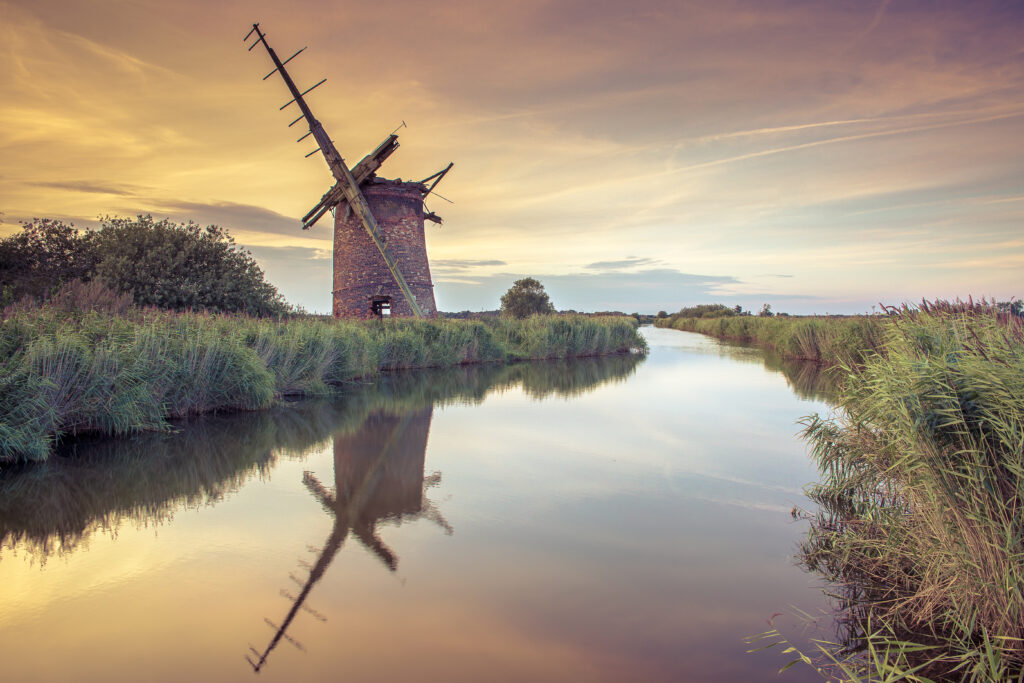
The Broads are something very special, and not just in one respect. The idyllic landscape is criss-crossed by rivers and lakes and the moors and marshes of the Fens: a haven for wildlife and adventurers alike. This remarkable area north and south of the Norfolk-Suffolk border in the east of England is unlike any other in the UK.
The waterways known as ‘broads’ give the National Park its name and its biodiversity. As the largest protected wetland habitat in the country, its marshes and coastline are home to more than a quarter of Britain’s rarest animals, including grey seals, red deer and numerous bird species that can be seen all year round.
With an impressive 200 kilometers of lock-free rivers and lakes on which to kayak, cruise, sail and paddle, the Broads trump even Venice and Amsterdam – with the coastline thrown in for good measure.
Cromer
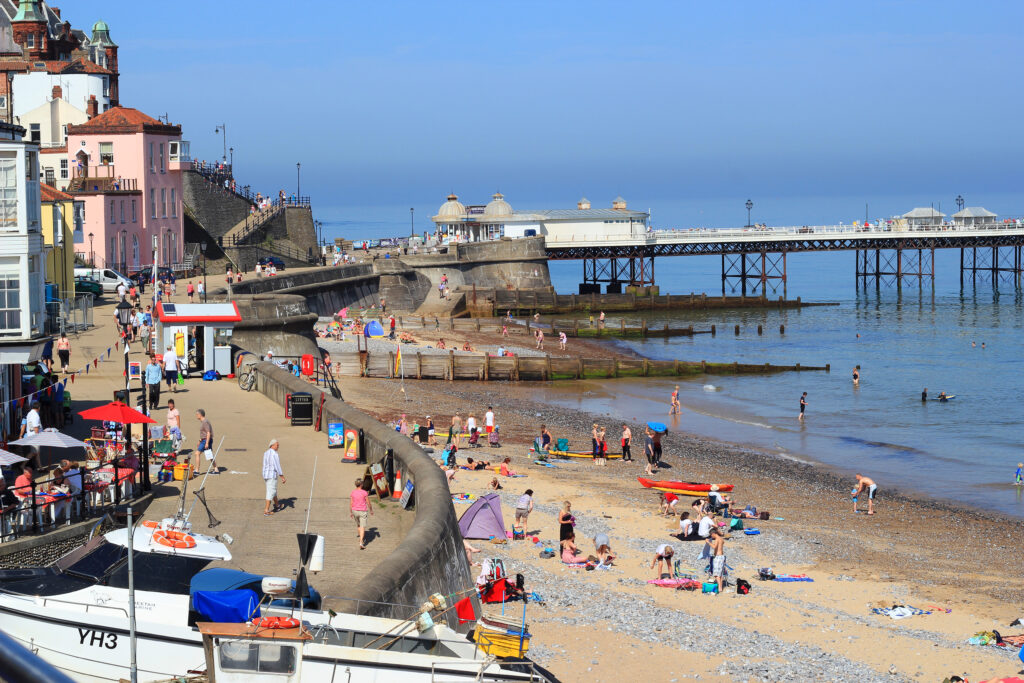
The village of Cromer is not mentioned in documents, but there is a book that records English estates and settlements of the time. It mentions a settlement from which the present-day village probably developed.
Cromer has been known as a seaside resort since the early 19th century. Rich banking families from Norwich visited Cromer for their summer vacation. When a London journalist for the Great Eastern Railway came to Cromer and reported on the area, it attracted attention throughout the country.
The fact that he described the region as a poppy region was the main reason for the increase in visitors. There were probably already countless poppies at that time, which still grow along the roads and in the meadows today and attract attention with their bright colors. Opium poppies were previously grown in the Norfolk region.
Thanks to the connection to the railroad line around 1877 with direct connections to London, Manchester and other places, people traveled to Cromer to have fun and relax. Even today, the town is still popular for holidaymakers or day tourists who want to relax on the beach or in the countryside.
In addition to the sandy beaches, water sports and other attractions attract visitors. The town offers the tower of St. Peter & Paul Church, a lookout tower as well as the Lifeboat Museum and the Cromer Museum for those interested in the history of the region.
Hunstanton
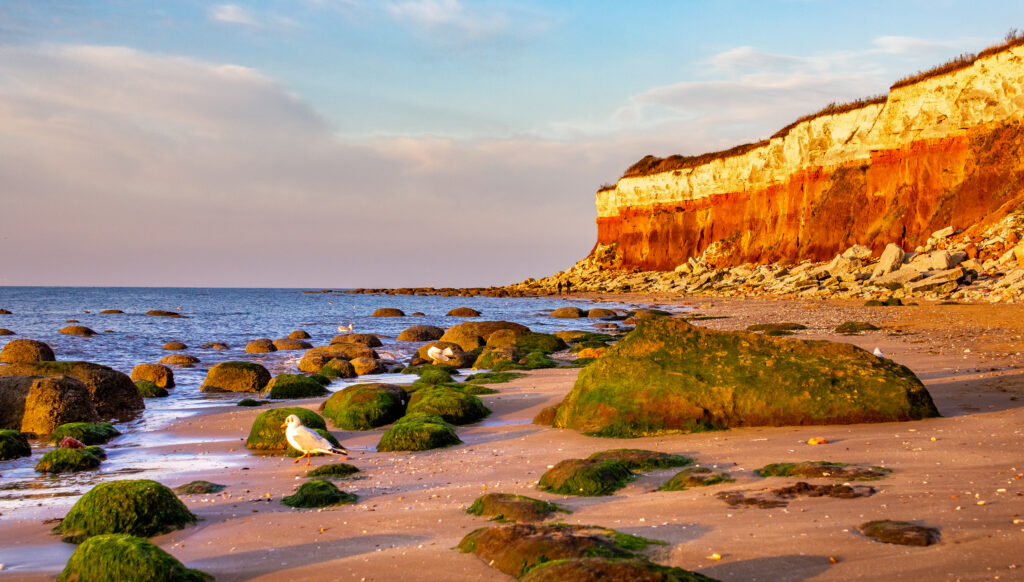
The elegant resort of Hunstanton is the ideal base to enjoy Norfolk’s superb coastline. Hunstanton, or ‘Hunston’ as it is known locally, is renowned for its unique striped cliffs and magnificent sunsets, made special by its position as the only west-facing resort on the east coast.
The seaside town began as a purposely-built resort in 1846 and retains its Victorian charm and character to this day, remaining a popular holiday destination for visitors of all ages. From buzzing family activities such as Crazy Golf, Pitch-and-Putt, and the Oasis Leisure Centre to the tranquil Esplanade Gardens there is something for everyone.
The town’s array of gardens are especially delightful during the spring and summer months, and you can follow a self-guided Horticultural Trail to make sure you experience them all.
Hunstanton’s excellent beach offers ideal conditions for playing on the sand, exploring rock pools, and enjoying the sea.
Old Hunstanton has a much more quieter village atmosphere, with carstone-built cottages, traditional British pubs and a much more slower pace of life in general. You can walk from one resort to the other, so you can delight in experiencing the two different areas of Hunstanton in one day.
Hunstanton’s popular seasonal land train carries visitors from Searles Leisure Resort to the Lighthouse and back again, making it very easy, and fun, to travel around Hunstanton, taking in many of the sights that the resort has to offer.
Wells-next-the-Sea
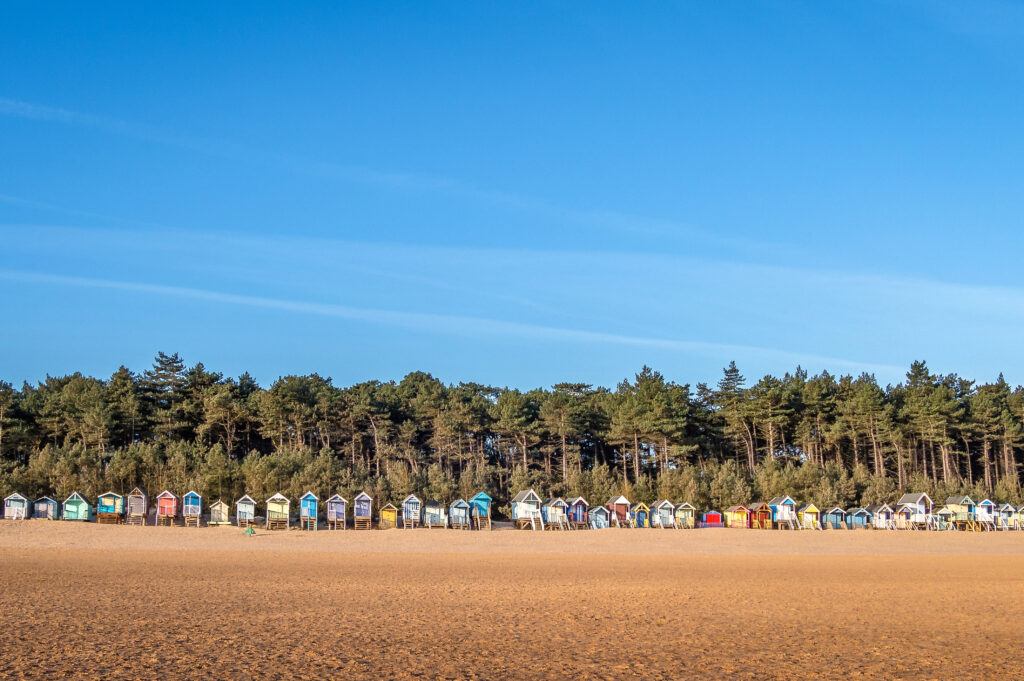
With its unique blend of natural beauty and cultural heritage, this gem of a destination has something for everyone. Whether you’re a nature lover, history buff or just looking to relax with your loved one or the whole family, Wells next the Sea has it all.
From exploring the stunning coastline and famous beach to enjoying delicious seafood at one of the city’s renowned restaurants and cafes, this ultimate travel guide will help you plan the perfect vacation.
The city is located on the north Norfolk coast, surrounded by stunning scenery and breathtaking views. It is known for its award-winning, unspoiled sandy beach, which stretches for miles and offers the perfect place for sunbathing, swimming and beach walking.
The town itself is a charming mix of historic buildings, quaint stores, lively cafes and a wide range of vacation homes to rent. This creates a unique atmosphere that is welcoming and fascinating for locals and visitors alike.
Holkham Hall
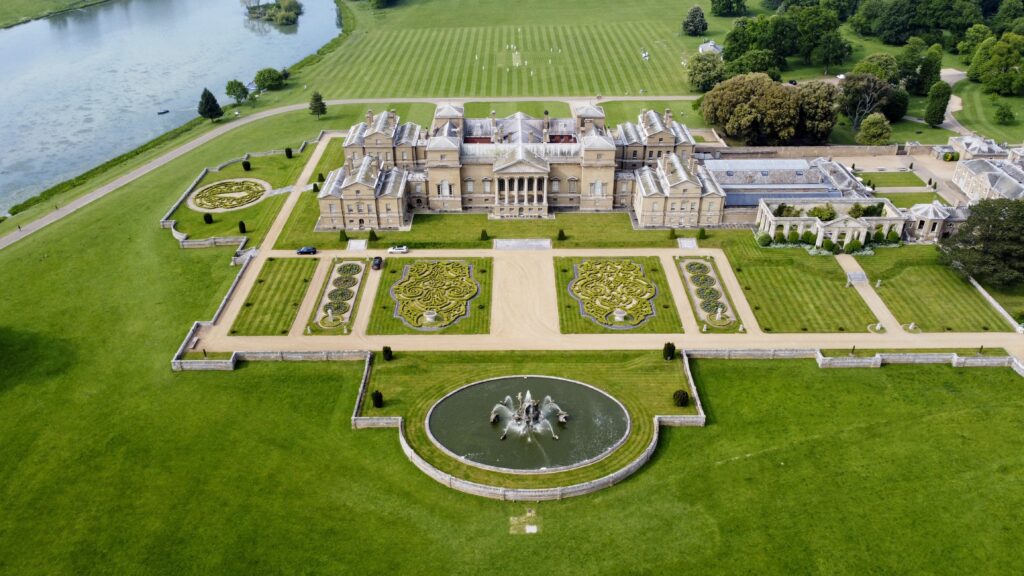
This elegant 18th century manor house is the seat of the Earls of Leicester and is situated in the heart of a 25,000 acre agricultural estate on the Norfolk coast. The house is still a family home today and is currently occupied by the 8th Earl of Leicester and his family of 6. The house is open to visitors three days a week.
The highlight of Holkham Hall is undoubtedly the entrance hall with walls and a domed ceiling made of alabaster. The magnificent rooms on the upper floor contain antique statues, beautiful furniture, precious tapestries and paintings by Rubens, Van Dyck, Claude, Gaspar Poussin and Gainsborough, among others. During the tour, the kitchen and the servants’ lounge are also on the program.
Holkham Hall is surrounded by extensive parkland, which is home to free-roaming fallow deer. This invites you to take long walks through the countryside. There is also a walled garden and an impressive, listed and fully functional fountain dating back to 1850.
Great Yarmouth
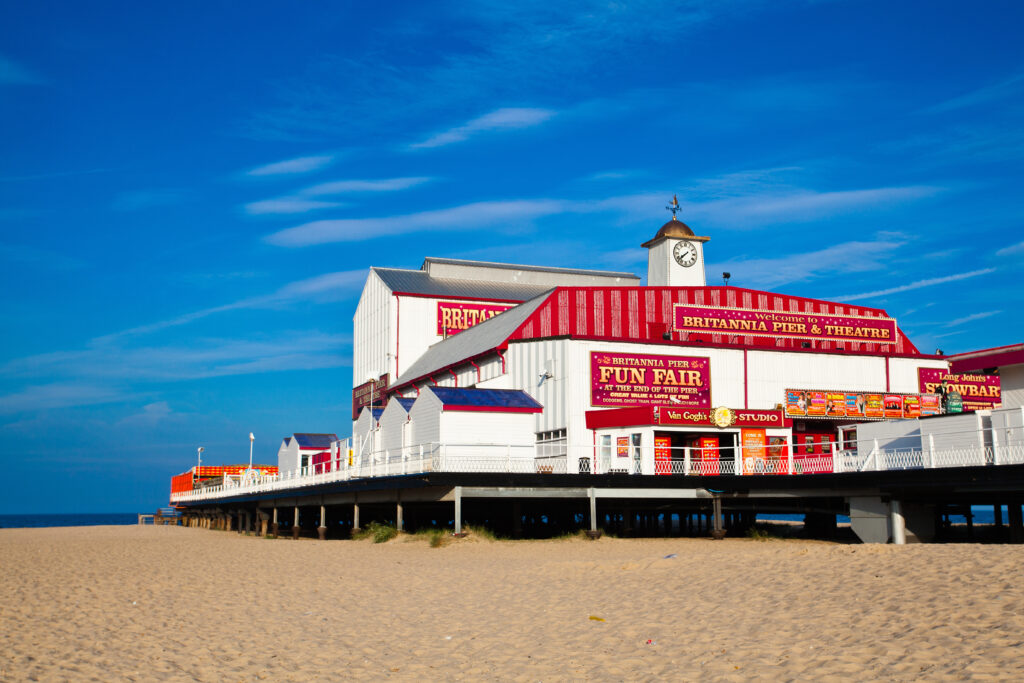
Great Yarmouth is a historic port town that settled on a sandbank at the mouth of the river over 900 years ago. From small beginnings, an extensive trading network developed, particularly with northern Europe, which became established in the early and later Middle Ages.
The town was a strategically important point in eastern England, and in 1262 King Henry III granted permission for the construction of town walls and a moat for defense.
The town walls were completed in 1396 and include both the large market square and the remains of three medieval monasteries. Many parts of the walls and towers are still preserved today.
The 12th century parish church of St. Nicholas at the north end of the market place is the largest parish church in England and was declared a Minster by the Bishop in 2005 along with its sister church in Kings Lynn.
By the 13th century, Great Yarmouth had developed into the largest herring port in Europe, with an annual herring market attended by merchants, traders and port representatives from all over Europe and the Baltic.
Nationally, Great Yarmouth was the fifth highest taxed town in England in 1334.
In the 18th century, Great Yarmouth became an important supply port for the Royal Navy.It also became a popular seaside resort and has been an important seaside resort for over two centuries.The town is Norfolk’s most important seaside resort with 11 kilometers of sandy beach and is surrounded by vacation resorts.
Sandringham Castle
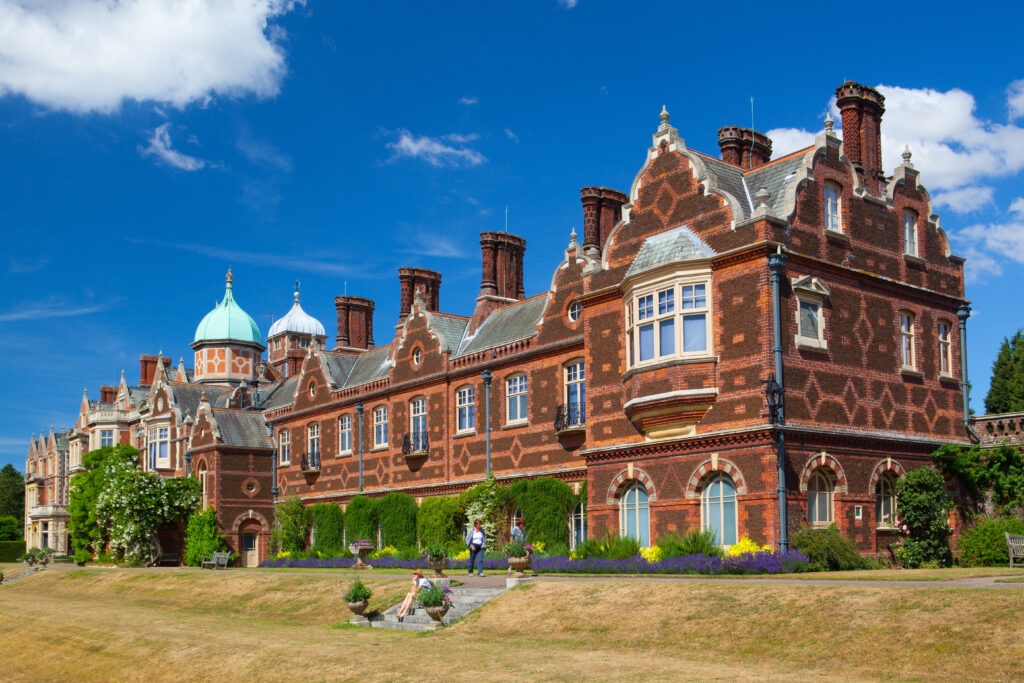
It is one of the most famous stately homes in England: Sandringham House. Not only Queen Elizabeth II felt at home in the royal country estate in Norfolk, but also the rest of the royal family – and have done so for generations. A good reason to take a closer look at the country house. In addition to parts of Sandringham House, the park is also partially open to the public.
Sandringham House did not always belong to the royal family.
It was not until 1862 that Queen Victoria acquired the estate and gave it to her son Edward VII, then still Prince of Wales.However, the house was too small for the prince and his wife Alexandra of Denmark to live in, which is why it was demolished and a new building was erected in the so-called “Jacobethan style”.
This is neo-Renaissance architecture, which was popular in England at the end of the 1820s and drew its inspiration mainly from the Renaissance buildings of the Elizabethan and Jacobean eras.
The new country house was completed in 1870 and offered all kinds of amenities for the time, such as an early form of shower, toilets with running water and gas lighting.
Even though part of the house was destroyed in a fire in 1891, the current building is essentially the same as the original country house, as the parts that were destroyed were rebuilt true to the original.
On the first floor of Sandringham, you can see numerous works of art that were given to the English royal family by other European monarchs, including a Meissen porcelain chandelier from William I.
Blakeney

Blakeney, in an Area of Outstanding Natural Beauty, is an ideal base to explore the north Norfolk Coast. At the heart is Blakeney National Nature Reserve with wide open spaces and uninterrupted views of the coastline, ideal for walking and spotting local wildlife including seals and migratory birds.
The village has pretty flint cottages, once home to local fisherman, and there are plenty of places to eat and stay as well as pubs, gift shops and art galleries to visit.
From Blakeney, you can take a boat trip to Blakeney Point to visit the seal colonies in this National Trust Nature Reserve. Blakeney Point is a perfect breeding site for grey seals and their pups, born during November to early January, and is the largest seal colony in England with thousands of seal pups born annually.
The Point is created by a longshore drift across the River Glaven and is constantly re-shaped by the tides and currents. These conditions provide an ideal spot for the local delicacy samphire to grow.
Castle Acre Priory

There is much to see at the priory, including the beautiful west end church gable, prior’s lodging and substantial remains of many of the buildings round the cloister.
The recreated herb garden grows herbs, which the monks would have used for medicinal, culinary and decorative purposes. Visitors can find out more about this beautiful priory from an exhibition, display of artefacts and audio tour.
Founded by the Warenne family soon after the Norman Conquest, for almost 450 years Castle Acre Priory in Norfolk was the home and workplace of monks and their servants, a refuge for pilgrims, and a stopping point for royalty, clergy and nobility.
It was also part of a vast monastic network centred on the great abbey of Cluny in France. Today the priory remains are among the finest and best-preserved monastic ruins in England.
Wymondham
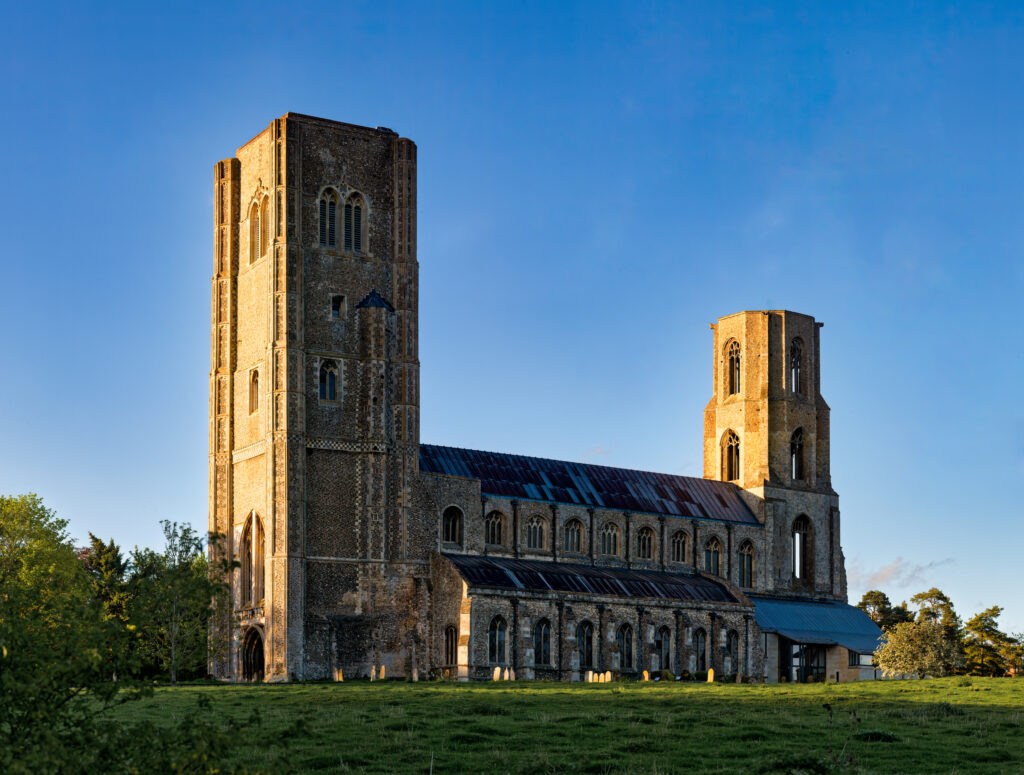
Wymondham is an idyllic market town in South Norfolk with a picturesque marketplace, intriguing shops, medieval lanes, ancient meadows, museum, steam train station and the magnificent Wymondham Abbey, all within a few minutes’ walk between each spot.
The beautiful abbey of Wymondham was founded in 1107 by William d’Aubigny, King Henry I’s steward. The abbey’s church was completed around 1130 and dedicated to the Virgin Mary. Originally, the church had the shape of a Latin cross with a central tower and two twin towers on the west side and was built with stone from Caen, which was specially shipped across the English Channel from Normandy.
After centuries of splendor, it fell into decline as a result of King Henry VIII’s schism (1534), which led to the dissolution of all monasteries in England. In 1538, the abbey was closed and incorporated into the King’s property. A slow decline set in, the monastery buildings were demolished to serve as quarries and compensation payments were not made to the church until the reign of Queen Elizabeth I in 1573.
The most precious works of art inside include: The Norman nave with its magnificent 15th century wooden ceiling, decorated with angel figures, and the gilded altar wing, the work of Sir Ninian Comper from the beginning of the 20th century, as well as another wooden ceiling of precious design, located in the north aisle.
Make sure to stop for afternoon tea, a coffee or lunch somewhere along the market street or for a pint in the Green Dragon, one of England’s oldest pubs.
Blickling Hall
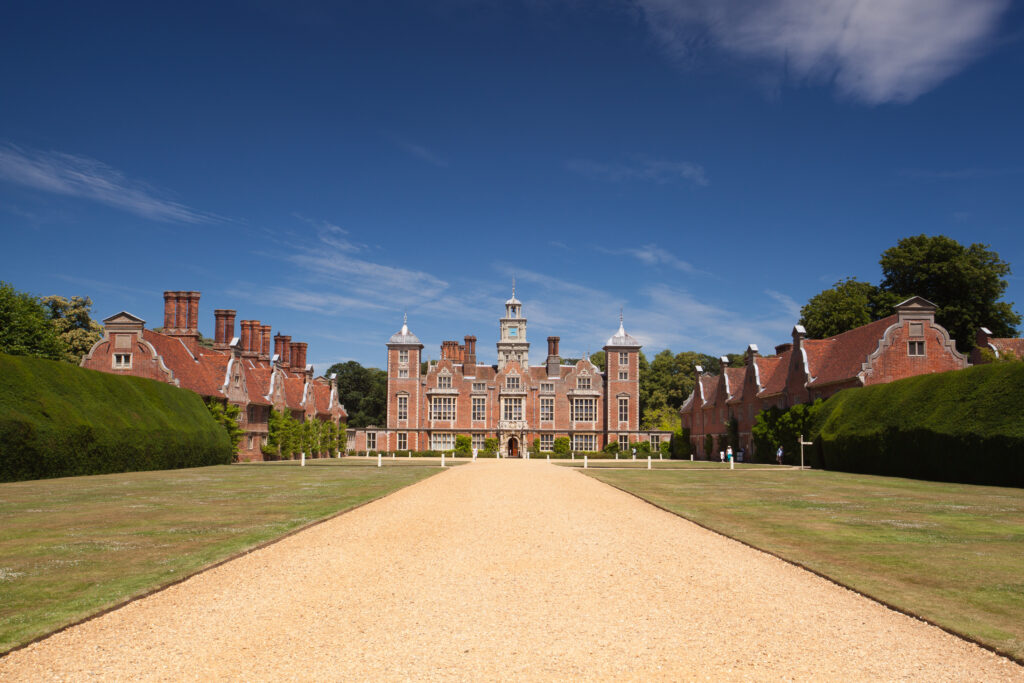
Discover a complete Norfolk estate with something for everyone. With a breath-taking red brick mansion, magnificent gardens and historic parkland, one day is never enough.
The story of the estate unfolds over a thousand years. The landscape with its hedges and narrow tree-lined lanes has changed little over the centuries and is quintessentially Norfolk.
Blickling’s owners have used the estate as a place of quiet refuge, while playing their part on the world’s political stage. Philip Kerr, 11th Marquis of Lothian, left this estate to the National Trust in 1940, and he’s vital to its story. Without him, it’s unlikely that Blickling would still be around for you.
Outside, the formal garden is the result of three centuries of inspired planting, and the gently undulating historic parkland is great for exploring. Grab a map of way-marked walks or a cycle trail and head out into the park. Keep your eyes open for lost buildings, stunning views and wildlife who call it home.
With three cafes on-site and a pub, there’s plenty of choice as to where to eat. Whether you’re a book worm, plant lover or stamp collector, don’t miss the Blickling shops and gallery selling a variety of local art and crafts.
Horsey Beach
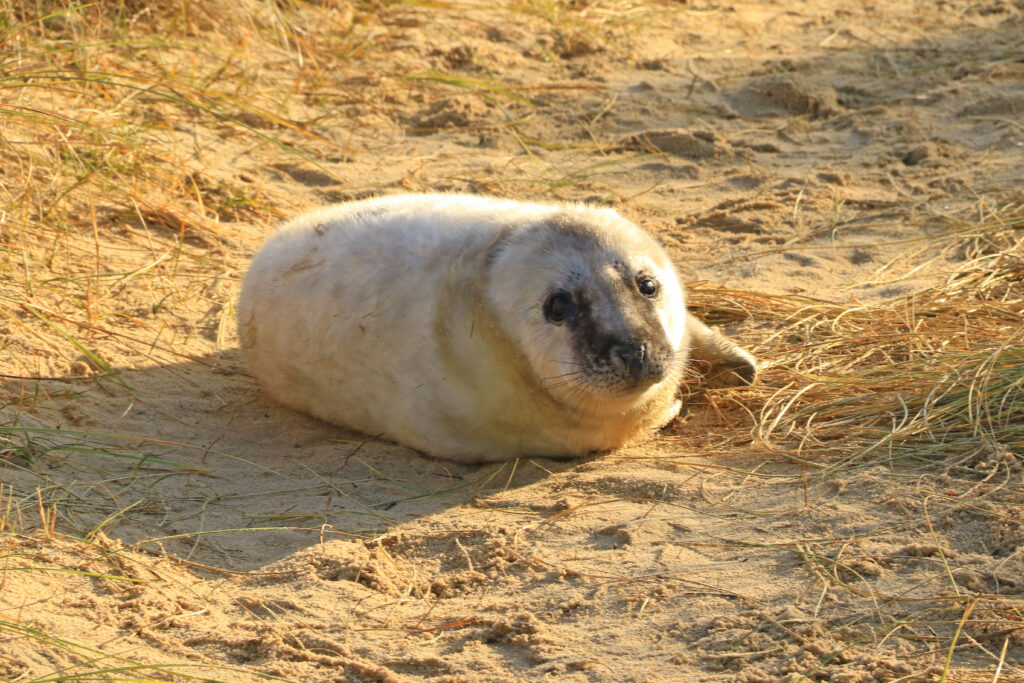
The undisputed stars of Horsey Beach are the grey seals that come ashore here in large numbers every winter to give birth and mate. Horsey is home to one of the largest and most accessible grey seal colonies in the UK, with hundreds of pups born on the beach between November and January each year. Grey seals are the larger of the two seal species in British waters.
The males can grow up to 2.5m long and weigh over 300kg! Horsey Beach had nearly 4000 seal pups born in the 2022/2023 season, which keeps growing each year. Amazingly, the seals return to the same place each year to give birth, making Horsey an important breeding site. The flat beaches, shallow waters and high dunes offer ideal conditions for the seals to raise their young.
The best time to visit is early in the day before it gets busy.
Outside of the pupping season, seals can often be seen at Horsey Beach, either hauled out on the sand or swimming offshore. They are inquisitive animals and will sometimes approach swimmers and surfers in the water, but should never be approached too closely as they are wild animals and can be unpredictable.
Oxburgh Hall
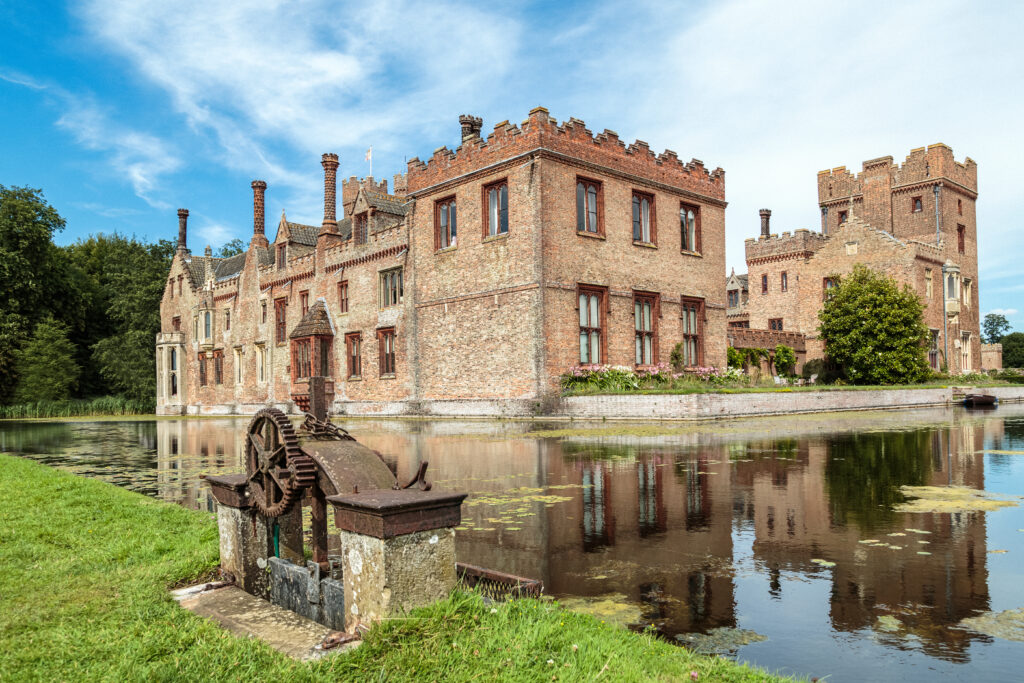
Oxburgh Hall is a country house with a moated castle and a rich history. It was built in 1482 for Sir Edmund Bedingfeld, an important figure of the time. Since its construction, the house has been owned by the Bedingfeld family, making it a place of historical significance. The architecture of the hall is a testament to the late Middle Ages and offers an insight into the lifestyle of the English aristocracy during this period.
One of the unique features of Oxburgh Hall is the Priest’s Hole, built by Nicholas Owen. This hidden room was used by the Catholic Bedingfelds to hide priests at a time when Catholicism was being persecuted in England. Accessed through a toilet, the Priest’s Hole is a testament to the religious history of the country and the lengths people went to in order to protect their faith.
Another notable feature of Oxburgh Hall are the Oxburgh Hangings. These are handmade hangings created by Mary Queen of Scots and Bess of Hardwick. The hangings are an important part of Oxburgh Hall’s collection and provide an insight into the artistic activities of these historical figures. The intricate needlework and the stories they tell make the Oxburgh Hangings a must-see for visitors.
Cley next the Sea
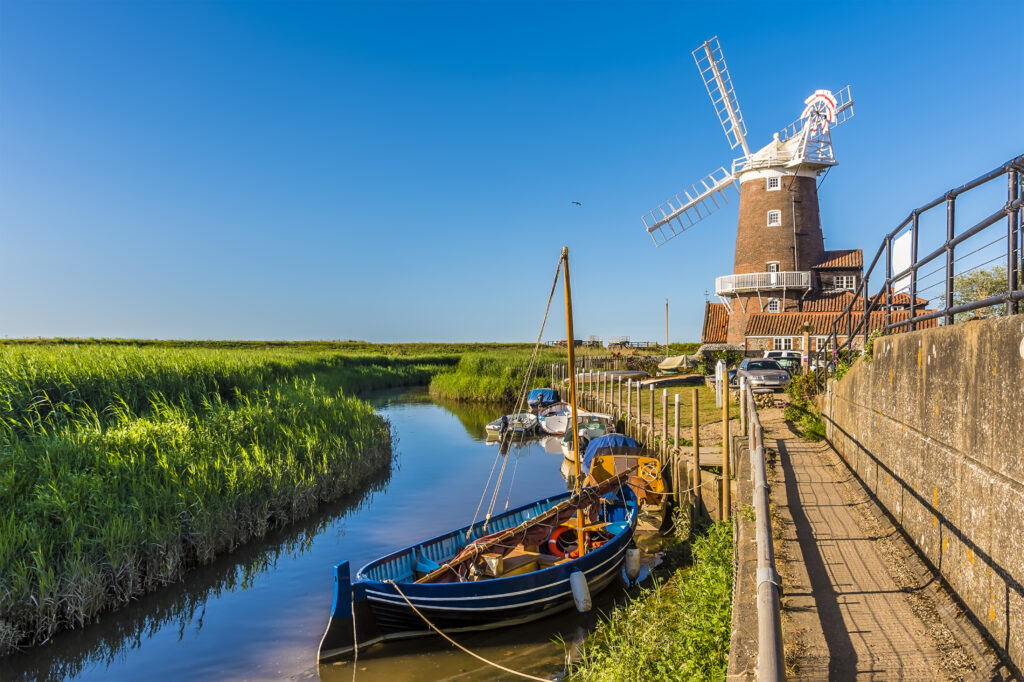
The village of Cley next the Sea with its famous 18th century windmill, is on the doorstep of a nature reserve set in an Area of Outstanding Natural Beauty with fine coastal walks.
Cley next the Sea was an important trading port in the middle ages and is now best known for its nature reserve. Between the village and the sea, you will finds Cley Marshes, a nature reserve owned by the Norfolk Wildlife Trust and is its oldest and well known nature reserve.
It offers some of the UK’s best birdwatching and has six hides providing fantastic views. Cley’s lagoons and beach, grazing marsh and reedbeds attract wintering and migrating wildfowl and waders, making it a haven for birdwatchers.
Standing on the edge of the marshes and the village is Cley’s other famous landmark, an 18th century windmill. Now a guesthouse, it is open to the public offering fantastic views over marshland which was used for horse races in the early 19th century and was a haunt for smugglers! The shingle beach can be accessed through the marshes and is a great place for sea fishing.
Next to the village green sits the impressive 13th century St. Margaret’s church. The narrow village streets are lined with unique shops including a smokehouse, bookshop, picnic fayre deli, tea shops and a pub as well as a shop selling hand-thrown stoneware pottery, made on site.
Sitting on the Norfolk Coast Path, you can walk from Cley to Holme next the Sea, which joins the ancient Peddars Way National Trail.
Norfolk Lavender
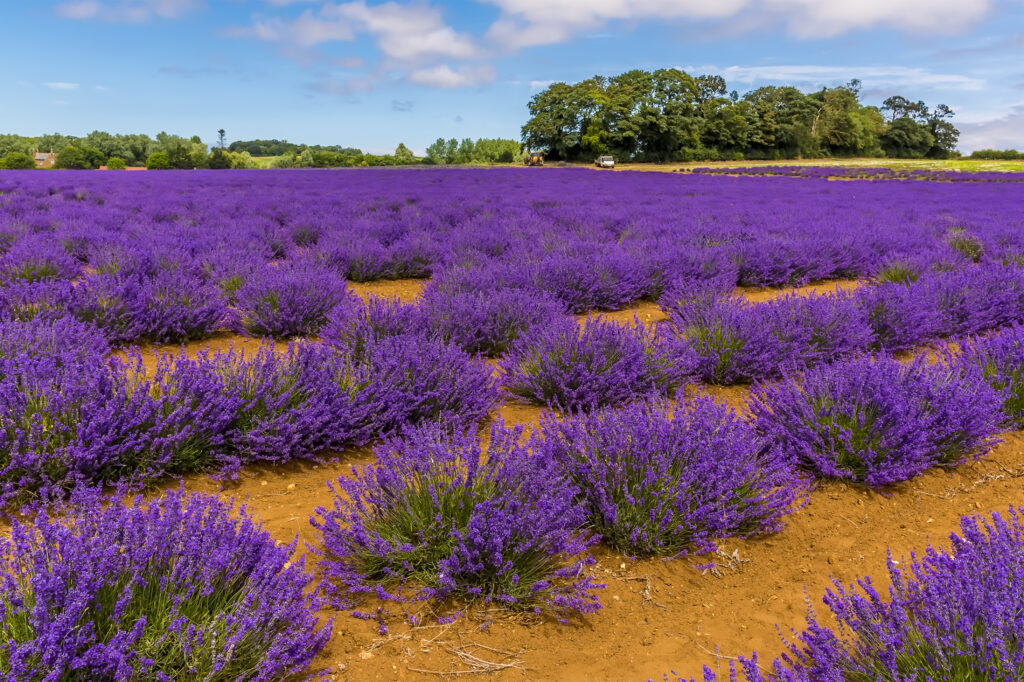
Lavender is more commonly associated with Provence, but this fragrant plant is also grown in England, specifically by the Norfolk Lavender Company near Heacham in Norfolk, not far from the royal Sandringham House.
The company was founded in 1932 and even then you could buy lavender in a small store, but it wasn’t until the mid-1950s that the whole thing was expanded on a larger scale and is now a popular tourist destination.
In addition to the lavender fields, you can also visit the distillery where lavender oil is produced; there is the National Collection of Lavender and guided tours are offered. The “Lavender Lounge” is a great place to stop for refreshments.
Sheringham
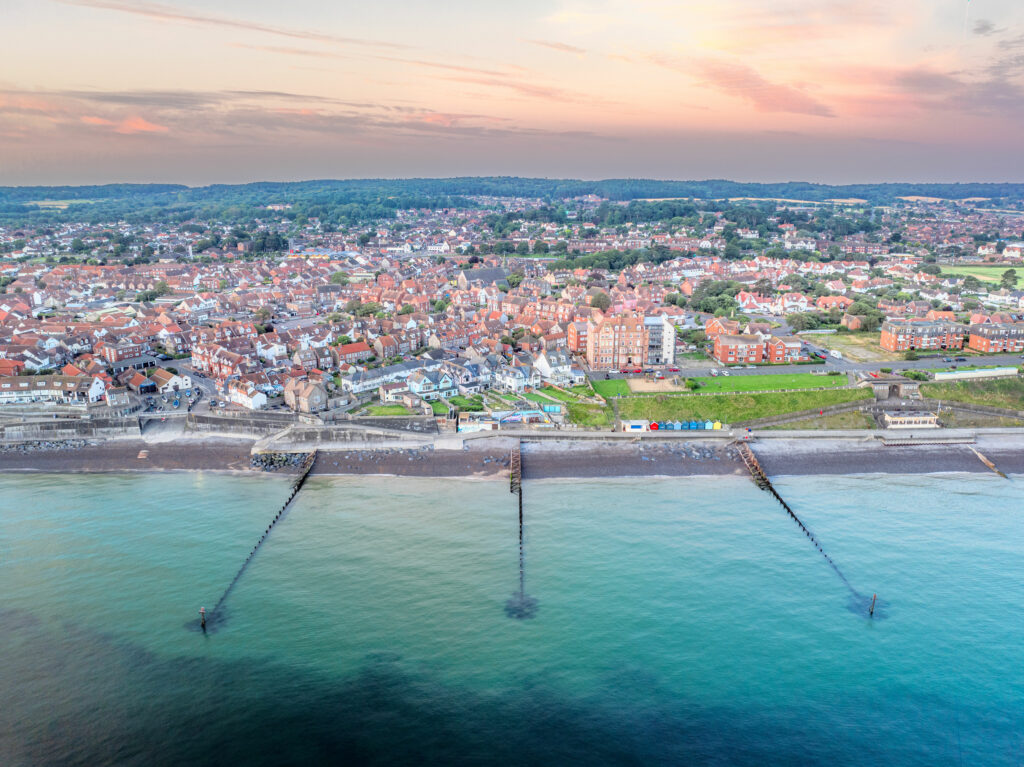
Sheringham, on the coast of deep history, is a traditional seaside town with an award-winning family-friendly beach, a historic steam railroad, stores selling local produce and fantastic coastal and countryside walks.
Sheringham was once an old fishing village and this heritage is still visible today in museums and murals that adorn the promenade.
Sheringham’s Blue Flag beach is family-friendly and offers scenic walks along the promenade, which is lined with a row of colorful beach huts.
At low tide, sand emerges from the shingle beach and the large boulders that line the beach make for great rock pools.
Sheringham is also on the Deep History Coast Discovery Trail and has its own Discovery Point. Just off the coast, just a few meters below sea level, is the longest chalk reef in the world!
In the town you will find pubs, cafés, tea rooms, museums and a theater as well as numerous accommodation options. In the center of Sheringham is the town clock, which was built on the site of a fountain dating back to 1862. There is a market on Saturdays throughout the year and on Wednesdays from April to November.
Nearby is the National Trust’s Sheringham Park, with miles of rolling hills covered in gorse and purple heather and offering magnificent views of the sea.
King’s Lynn
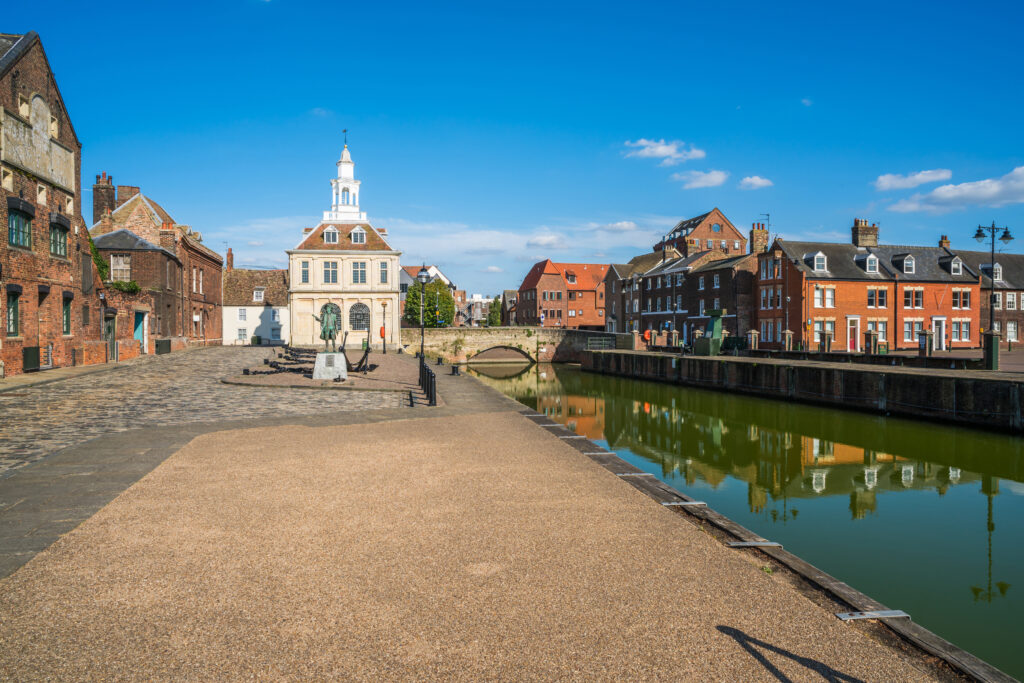
The Hanseatic town of King’s Lynn was one of England’s most important ports from as early as the 12th century and this maritime past is still very much in evidence today. Fine old merchants’ houses stretch down to the river between cobbled lanes and the elegant Custom House overlooks the harbour.
The town’s heritage is reflected in an amazing array of historic buildings and at two magnificent market places: Saturday Market Place, where St Margaret’s Church , designated as a Minster Church in 2011 by the Bishop of Norwich, is surrounded by splendid buildings and Tuesday Market Place, quite possibly one of England’s grandest squares.
Visitors can discover the story of King’s Lynn by visiting a host of heritage sites and attractions, best discovered with the help of the free guide Discover King’s Lynn or by joining a guided tour. The town’s Hanseatic history and trading links with Europe can be discovered on the self-guided Hanse Trail.
The story of the town’s maritime trade, its fishing communities and its famous navigators can be explored on the Maritime Trail, or take a trip on the King’s Lynn ferry to see the maritime landscape of the King’s Lynn quayside and town from the banks of west Lynn.
King’s Lynn’s popular town centre offers an extensive pedestrianised shopping area with ample parking close by. The Vancouver Quarter offers a modern shopping experience that sits well next to the traditional shopping areas of the town and are complemented by the markets which often take place on the historic Tuesday Market Place.

